Fighting to breathe and terrified, the elderly woman can only watch as two medics try to save her from a severe asthma attack. A quick test reveals she has a “silent chest” – a dangerous symptom. Giving her medication via a mask turns out to be fruitless. But the ambulance technicians can’t do any more – they need to call for backup. A senior paramedic arrives on the scene and gives her an adrenaline injection in the hope of stimulating her heart to help her breathe.
This was just one scene HuffPost UK witnessed during a 12-hour shift this month with a paramedic driving a rapid response vehicle in Toxteth, Liverpool.
At one point on the same night, 14 ambulances were queuing at the city’s Whiston Hospital, and it was taking up to 244 minutes to clear an ambulance from there.
“When I started this job, we had something like 11 hospitals in Liverpool,” says senior paramedic Mike Quirk.
“But now we are down to around three. All those beds have gone and not been replaced over the years. We end up with bed blocking because there’s nowhere for the patients to go.”
Things reached such an extremity during the shift we witnessed, that ambulance control alerted crews telling them to take patients to the next nearest hospital for the following hour unless the patient was in a life threatening situation.
Latest NHS figures show thousands more ambulance patients are facing long waits at busy A&E departments compared to the same time last year.
In the week beginning December 9, some 16,254 people arriving to hospital by ambulance had to wait more than half an hour to be seen by emergency department staff.
This compared to 9,357 in the same week last winter – a 75% jump.
The average handover time on the Sunday we spent with North West Ambulance for the Cheshire and Merseyside area was 40 minutes.
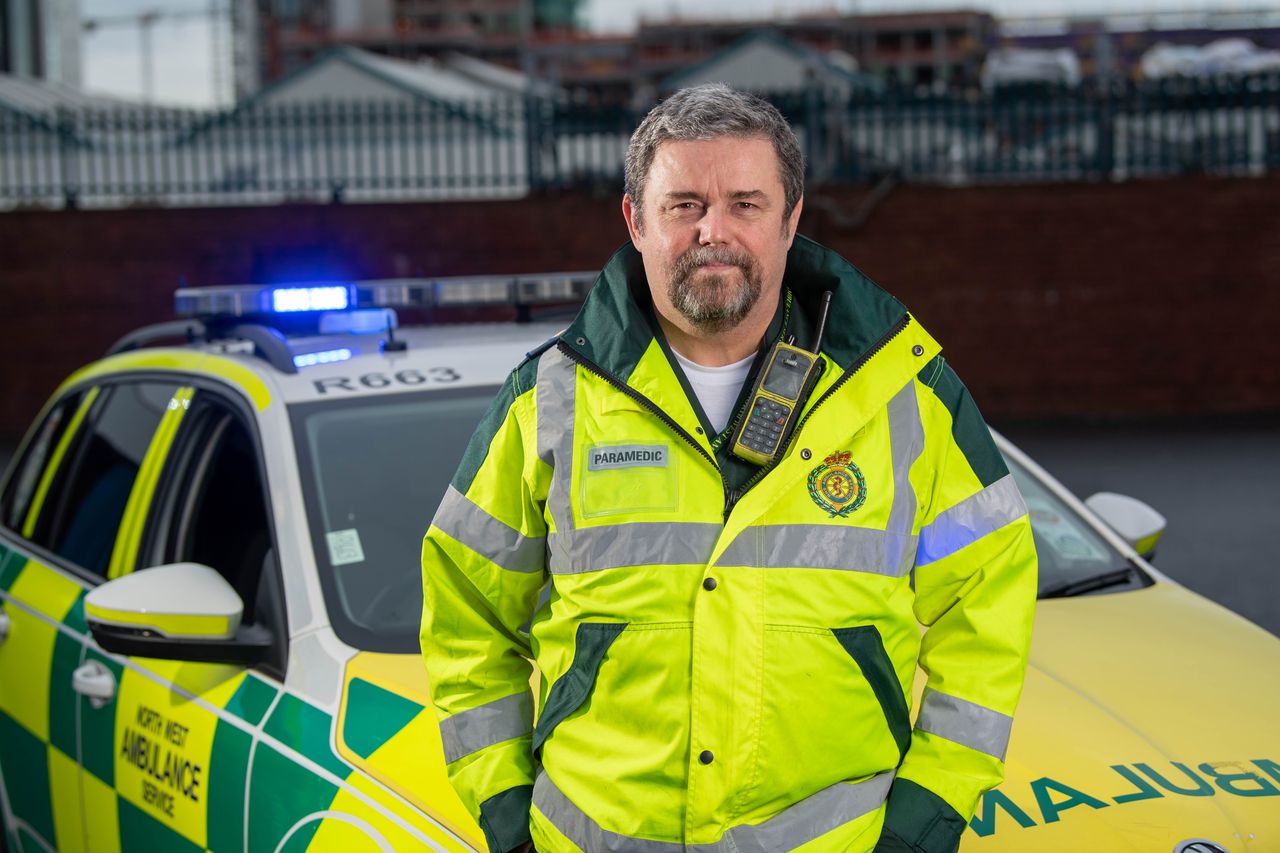
“I was called out once to open a tin of soup. But it was an elderly lady whose carer hadn’t turned up ... and she was starving.”
- Mike Quirk
There’s a multitude of reasons why ambulances keep getting stuck in hospital queues, says Quirk, 53, who has worked for the ambulance service for 36 years.
“The patients in A&E end up on trolleys in corridors and the knock-on effect is that ambulances are left standing in queues.
“People do get out of hospital much quicker nowadays as treatment and recovery has improved so much. But there still aren’t enough beds to cope with the population and its demands.”
It is a situation mirrored across the country says Paul Turner, deputy branch secretary for ambulance union GMB North West. But he says it isn’t the fault of overstretched hospital staff, as they are trying their best in challenging circumstances.
“Unfortunately, hospitals do not take patients off us as quickly as we’d like. This is down to a combination of ward closures, no available beds and a high number of people self-presenting at the emergency department.
“As a result, there’s nowhere to take patients we have transported to hospital and we end up standing with them in the corridor. We cannot safely discharge that patient if there’s no one to look after them.
“It is not the fault of the hospital nursing staff as they are always stretched and working to the best of their capacity. They are the victims of funding cuts like everyone else.
“This is about lots of cutbacks and the NHS being in crisis as it is so underfunded.”
Quirk says one reason behind the added pressure is the closure of community hospitals, which cared for the elderly. He has seen people in isolation who call for an ambulance as they have no one else to turn to.
“I was called out once to open a tin of soup,” he told HuffPost UK. “But it was an elderly lady whose carer hadn’t turned up and the poor dear was starving.”
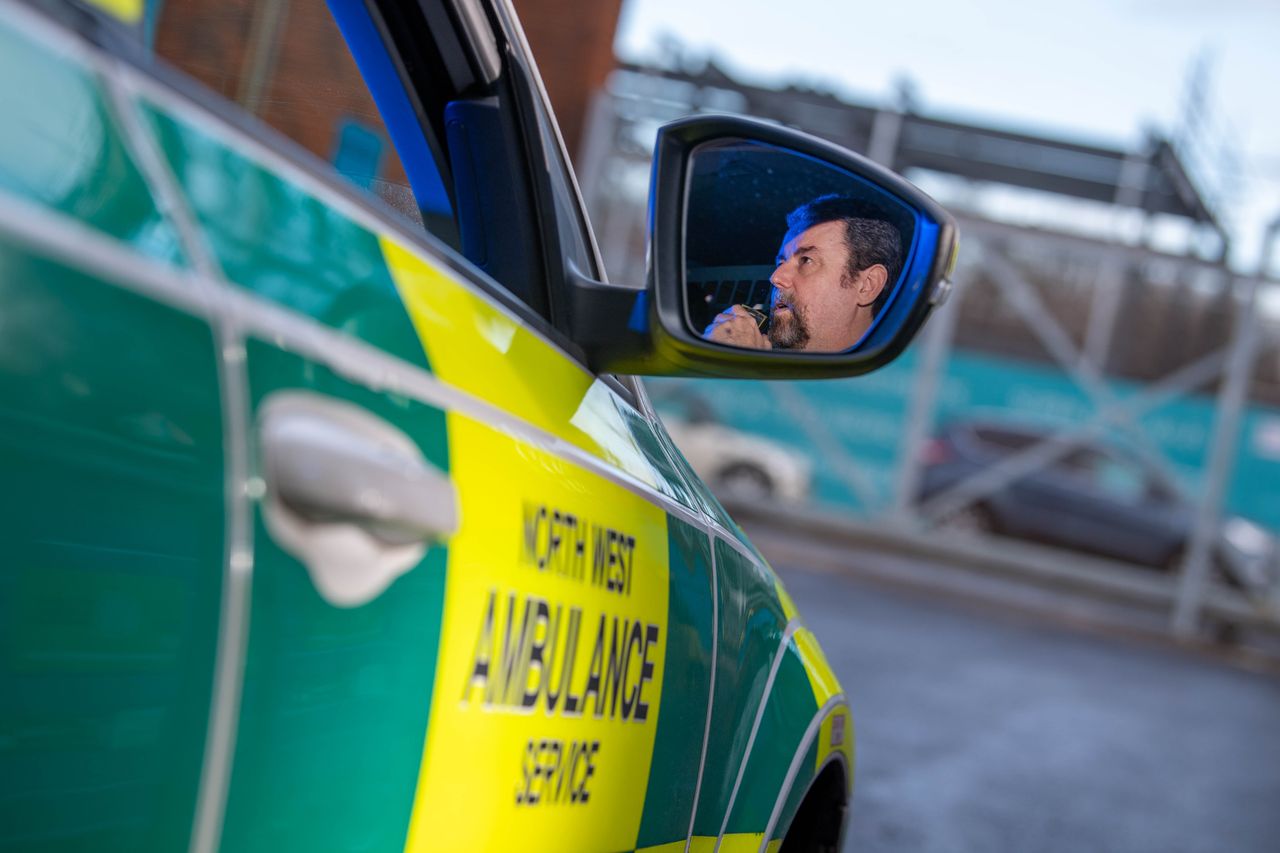
GMB’s Paul Turner warns the current problems are creating a vicious circle.
“Unless the government invests in social care as well as emergency care, things are not going to change.” he warned.
Paramedics trapped in hospital waiting for patients to be found beds can often become disillusioned and frustrated, says John Pollard, senior paramedic team leader on the rapid response vehicle for the second part of our shift. “They want to be out there doing their jobs, not standing in hospital corridors for hours.” he explained.
He added: “The system has just been under-funded for years. I feel sorry for the A&E nurses.”
Hospital handover waits are a key challenge for North West Ambulance Service Trust and the NHS in general, particularly in the winter months when the whole system experiences extra pressures.
A spokesman for North West Ambulance Service told HuffPost UK they are working closely with hospital colleagues to put a number of initiatives in place to free up ambulance clinicians to get them back out in the community as quickly as possible so they can respond to emergency situations.
But they say the public can also play their part by only calling 999 in emergencies and considering other healthcare providers such as GPs and pharmacies if their condition isn’t serious.
Whiston Hospital told HuffPost UK it has the highest number of A&E attendances in the region, seeing and treating more than 115,000 patients a year. A hospital trust spokesman said: “As with all hospitals across the country, we have experienced a significant increase in demand for services and this has at times led to unavoidable delays.”
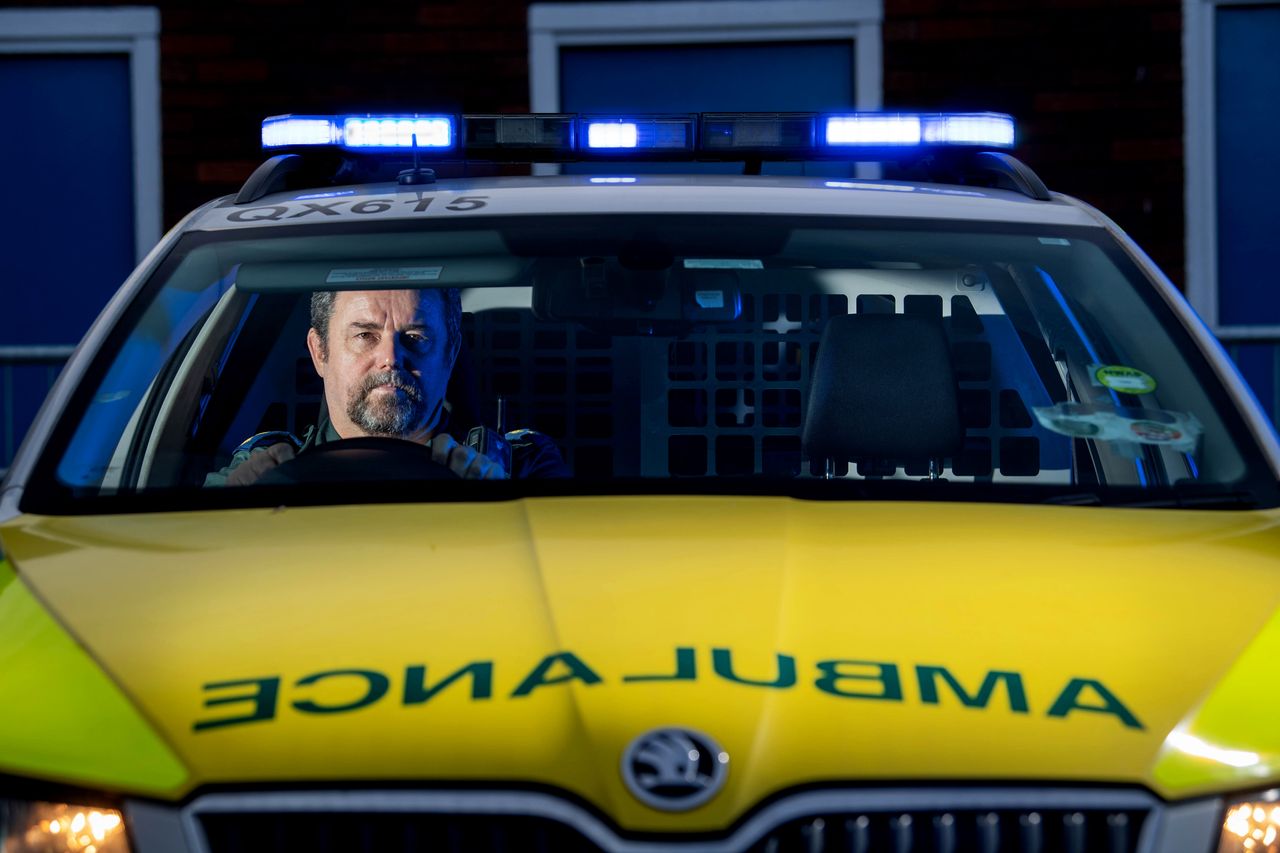
Hurtling through the streets at speed, weaving through traffic and driving through red lights, rapid response vehicles are designed to reach patients quicker as they can travel faster than traditional ambulances.
They are despatched to Category 1 calls which are life threatening conditions such as cardiac or respiratory arrest. They also attend Category 2 calls for serious conditions such as stroke or chest pains which may need rapid assessment. If the call taker is concerned about the welfare of a patient, they can send them to other incidents too.
“That’s what this job is like. You can see death and destruction at one moment and then something nice like a baby being born the next.”
Life and death is a regular part of their role. The morning HuffPost UK visited, paramedic Mike Qurik attended a care home where an elderly woman had passed away.
Only a short while later, he was standing in the living room of a home where a woman had just given birth in a birthing pool.
“The baby must have arrived suddenly as the midwives weren’t there,” he said. “There were six kids standing around with dad and the baby had just been born. I clamped the cord and the dad cut it.”
Quirk says a woman about to give birth is one of the most daunting situations paramedics face “as you have two lives in your hands”. He has delivered more than 40 babies, including some breech births or the baby in reverse presentation.
“They worked out in the end but were challenging at the time.”
“That’s what this job is like. You can see death and destruction at one moment and then something nice like a baby being born the next.”
It’s not just life and death, but everything in between too. A call comes in on Quirk’s radio alerting us to a 22-year-old female member of staff at the B&M warehouse who has had a fit.
The patient is sitting looking confused and dazed and Quirk gently talks to her, reassures her and builds up such a rapport, he has her laughing within minutes.
“You are doing an awful lot of observations automatically without even thinking about it.” explained Quirk. “While we were chatting, I was looking at the colour of her skin and whether she was alert and her level of consciousness.”
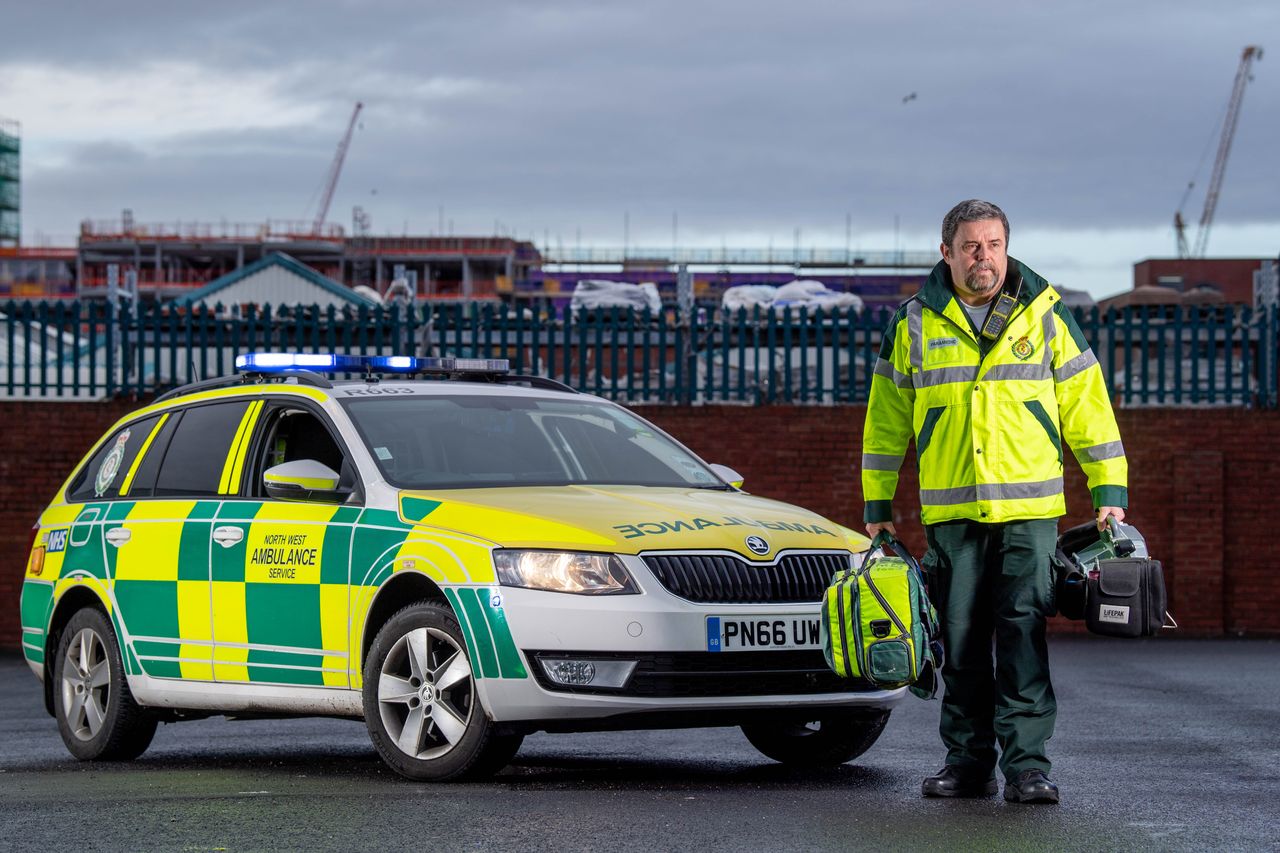
At around 5.35pm, the rapid response vehicle is alerted to a 42-year-old man found unconscious on a residential street. With sirens blaring and travelling at speed, we arrive within minutes to find the patient unconscious lying on a white blanket with an umbrella sheltering him from the beating rain and a group of concerned people gathered around.
Quirk is soon joined by an ambulance crew and they discover the patient also has hypothermia. It is unknown how long he was out there before being found. His brother who lives nearby is among the crowd at the scene and other family members arrive.
The patient is an alcoholic who recently came out of rehab and has had a relapse. Despite attempts to treat him at the scene, the patient fails to respond to any stimuli and remains unconscious. He is lifted on to a stretcher and taken to hospital.
Shortly after senior paramedic John Pollard takes over duty of the rapid response vehicle, control alert him to a 31-year-old woman with previous lung problems who is suffering chest pains.
We arrive to find April Davis lying on the bed. April has numerous conditions and has had pneumonia in the past. She underwent knee surgery last year which led to a blood clot in her lungs a few months later.
She tells Pollard she woke up with chest pains which have worsened. “It feels like I have got a corset on,” she said. “If I take a deep breath, I get a stabbing pain. My chest feels squished.”

Pollard examines April and tests her heart and lungs and finds them clear. He jokes and chats as he assesses her putting her completely at ease. Although Pollard suspects April’s breathing problems are due to an infection, with her previous history of pulmonary embolism, he calls an ambulance crew to take her to hospital. “I know it is a pain in the backside, but your health is more important.” he said. “They’ll do blood tests to see if there’s any blood clots and hopefully put your mind at rest.”
Her partner Greg, who she is marrying in a few months, said April was reluctant to call an ambulance, but he insisted. “If something happened and it turned out to be a blood clot and I knew she had been struggling beforehand, I would feel terrible.” With dark humour he added: “The funeral wouldn’t have been much fun.”
While patients like April are loathe to call an ambulance unless they really need it, Pollard says this is not always the case. One of the biggest challenges faced by ambulance staff on top of increased demand is meeting people’s expectations.
“We live in a society where everything is immediate and no one wants to wait any more. They are used to pressing a button and things happening instantly.” he told HuffPost UK.
“Some people want instant cures and think someone else will solve all their problems if they get sick. A lot of people don’t need to go to hospital. They want a cure for the common cold but it just doesn’t exist.
“Some people still have that perception that if you’re taken to hospital in an ambulance, you go to the front of the queue but the reality is far from that as we triage them on the way.”
Our shift ends with the elderly woman who is suffering an asthma attack.
Pollard gives her an injection of adrenaline, and takes her to the hospital as a life-threatening emergency.
Emergency medical technician Caroline Lea is driving the rapid response vehicle. She tells HuffPost UK how she has been working full-time as an emergency medical technician as well as studying at university to become a fully qualified paramedic.
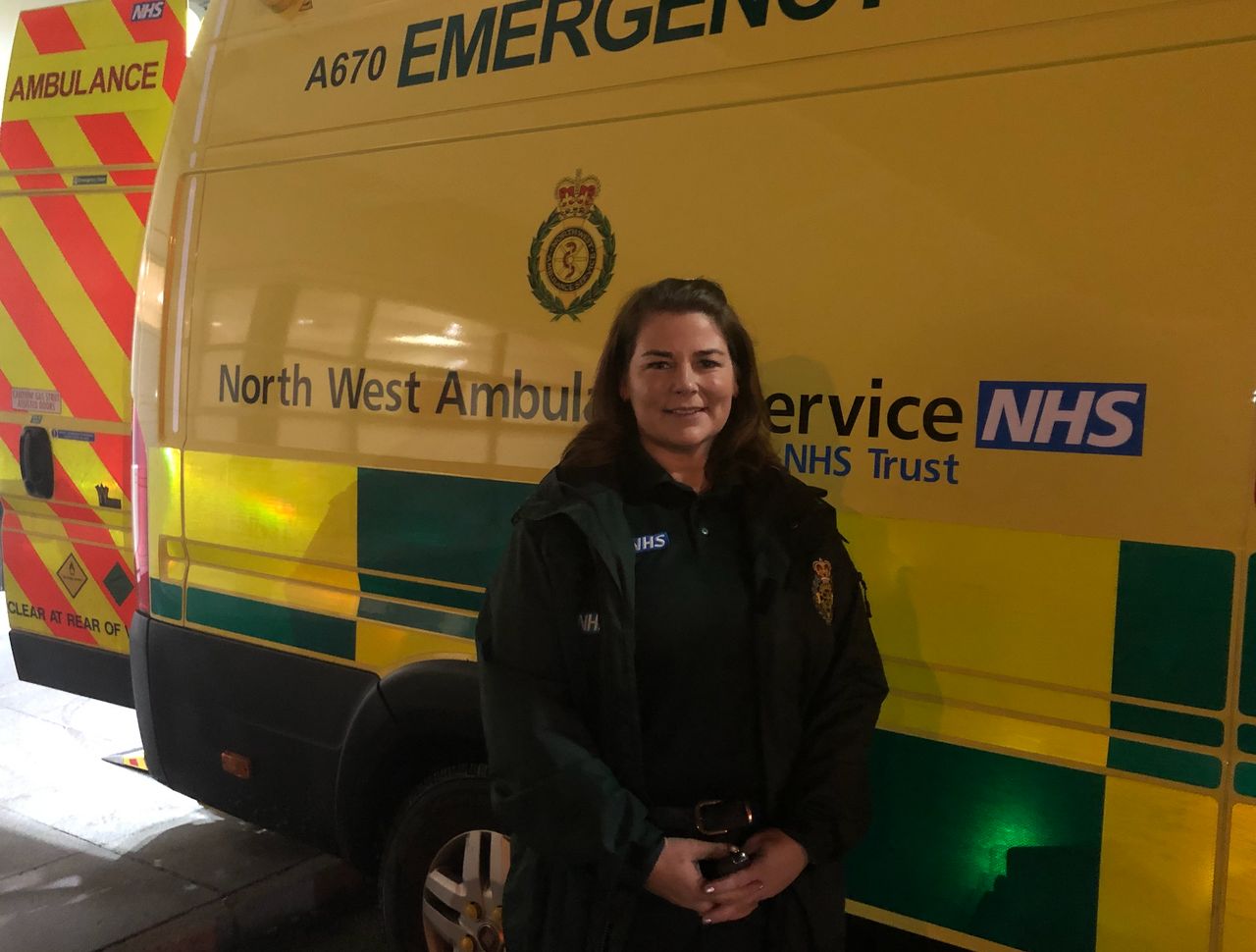
“My aim is to use the negatives and tragedies to do something positive and help save lives.”
- Caroline Lea
Lea reveals how a horrendous tragedy spurred her to make a career change from her job as a teaching assistant.
During a journey back from Butlins in Skegness she witnessed a horrific head-on smash in Grimsby between a car and a lorry. A family-of-five including a 22-month baby were killed.
“I tried to resuscitate the baby,” recalled Lea. “There were a lot of people at the scene but only two of us who tried to resuscitate the family.
“Even though I wasn’t able to save the baby, I came away knowing I’d done my very best. It made me realise I could do this as a career as I had the mental ability to cope with it.”
Lea, 45, also lost her 28-year-old brother in 2005 after he was murdered in a domestic abuse incident. She said: “I can’t change what happened so I take him with me and live life for the both of us. My aim is to use the negatives and tragedies to do something positive and help save lives.”
As the ambulance pulls into the hospital grounds, the elderly lady with the severe asthma attack is taken inside where emergency department staff are expecting her arrival.
Ambulance staff have done all they can and given her the best chance of breathing with the adrenaline injection, but she is still seriously ill, and appears frail. It’s approaching midnight as she is rapidly wheeled into the emergency department. All ambulance staff can do now is to put her in the hands of hospital professionals.
The nature of a paramedic’s job means that sadly not all stories have happy endings. Staff have to cling to the knowledge they tried their hardest for every patient.
As senior paramedic Mike Quirk puts it: “You can’t afford to let the bad jobs or the ones you couldn’t save get to you. If you did, you’d become stressed and never be able to cope. You have to focus on the people you do save and the difference you make.”
